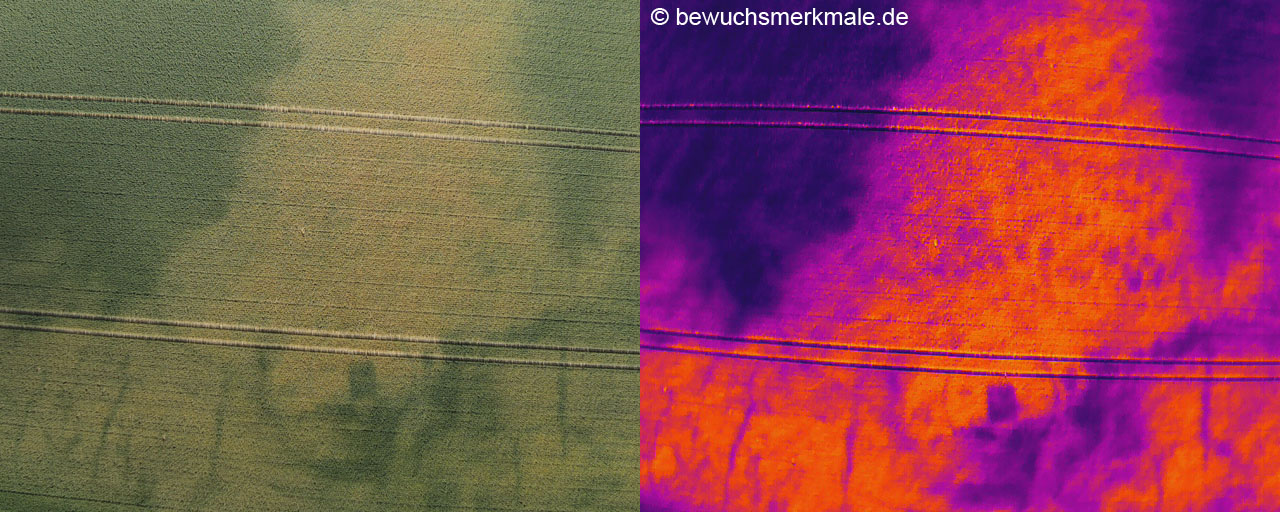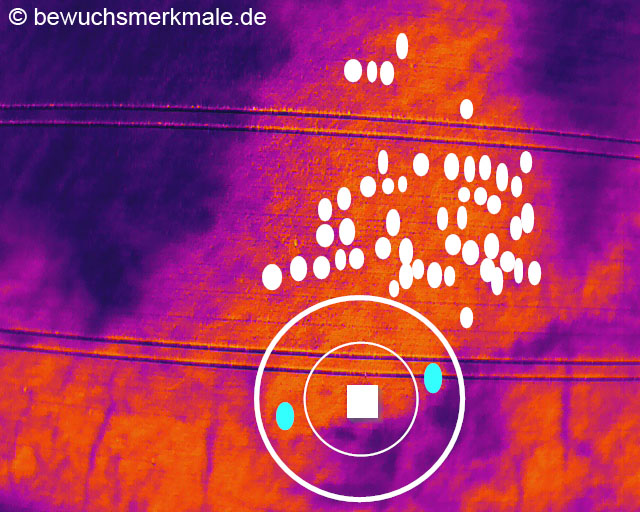Additional insights gained through thermography
At the end of June 2025, a burial mound first discovered in aerial photographs in 2023 appeared as a crop mark in the ripening wheat (see Fig. 1, left). In the actual photograph taken from the west, the rectangular central burial chamber and most of the trench are clearly visible, with only the eastern side no longer detectable. In addition, on closer inspection, another fine circle can be seen inside the circular ditch, presumably the remains of a palisade that once consisted of wooden logs.
If we now compare this with the thermal image (see Fig. 1, right), we immediately notice the improved representation of the palisade circle. The outer, wider circular ditch, on the other hand, is less clearly defined than in the normal image.

However, further findings can now be seen in the thermal image: to the east of the burial mound, a large number of grave pits can be seen as thermal features that are not visible at all in the normal image. Roughly estimated, there are up to 100 graves in an east-west orientation. This allows the burial ground, including the burial mound, to be identified as a row grave field from the (late) early Middle Ages.

Fig. 2 shows a rough sketch of the most striking findings. In addition to the burial mound with central burial, circular ditch and palisade, the most striking grave pits have been highlighted. The two findings marked in light blue could be secondary burials or later reburials in the burial mound.
